
Military recruit training, commonly known as basic training or boot camp, refers to the initial instruction of new military personnel. It is a physically and psychologically intensive process, which resocializes its subjects for the unique demands of military employment.

The Ranger School is a 62-day United States Army small unit tactics and leadership course that develops functional skills directly related to units whose mission is to engage the enemy in close combat and direct fire battles. Ranger training was established in September 1950 at Fort Benning, Georgia. The Ranger course has changed little since its inception. Until recently, it was an eight-week course divided into three phases. The course is now 61 days in duration and divided into three phases as follows: Benning Phase, Mountain Phase, and Swamp Phase.

A military exercise, training exercise, or war game is the employment of military resources in training for military operations. Military exercises are conducted to explore the effects of warfare or test tactics and strategies without actual combat. They also ensure the combat readiness of garrisoned or deployable forces prior to deployment from a home base.
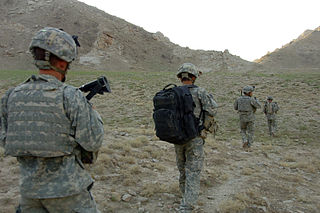
Long-range surveillance (LRS) teams were elite, specially-trained surveillance units of the United States Army employed for clandestine operation by Military Intelligence for gathering direct human intelligence information deep within enemy territory. Classic LRS employment is to infiltrate deep into enemy territory, construct hide and surveillance sites, and provide continuous surveillance/special reconnaissance of an intelligence target of key interest.
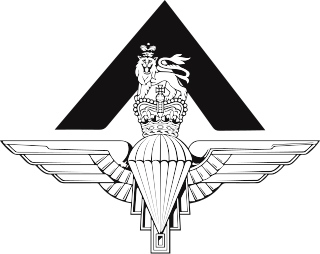
The Pathfinder Platoon is a pathfinder unit of the British Army, and an integral part of 16 Air Assault Brigade. The Pathfinder Platoon acts as the brigade's advance force and reconnaissance force. Its role includes locating and marking drop zones and helicopter landing zones for air landing operations. Once the main force has landed, the platoon provides tactical intelligence and offensive action roles for the brigade.

King Abdullah II Special Forces Group, commonly known as the JORSOF are strategic-level special forces of the Royal Jordanian Army under the Jordanian Armed Forces. Founded on April 15, 1963, on the orders of the late King Hussein, its primary roles include reconnaissance, counter-terrorism, search and evacuation, intelligence gathering combat, and the protection of key sites. The Special Forces Group are also charged with carrying out precision strikes against critical enemy targets. The unit is equipped and trained to be able to operate behind enemy lines for long periods without any logistical support, and is considered some of the best in the Middle East.
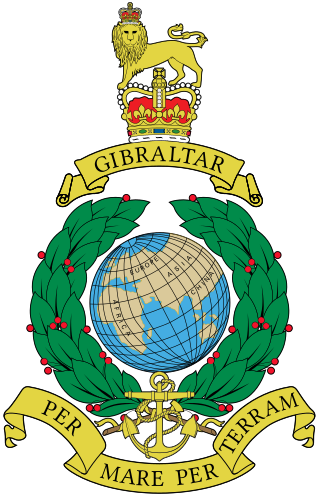
The Royal Marines Reserve (RMR) is the volunteer reserve force used to augment the regular Royal Marines. The RMR consists of some 750 trained ranks distributed among the four units within the UK. About 10 percent of the force are working with the Regular Corps on long-term attachments in all of the Royal Marines regular units. All the volunteers within the RMR must pass through the same rigorous commando course as the regulars. The former may be civilians with no previous military experience or may be former regular Royal Marines.

United States Army Reconnaissance and Surveillance Leaders Course (RSLC) is a 29-day school designed on mastering reconnaissance fundamentals of officers and non-commissioned officers eligible for assignments to those units whose primary mission is to conduct reconnaissance and surveillance, target acquisition, and combat assessment operations. RSLC is taught by the 4th Ranger Training Battalion, Airborne and Ranger Training Brigade. The school is open to Soldiers, Marines, Sailors and Airmen to train them to expert levels in reconnaissance, surveillance, target acquisition, battle damage assessment, communications, planning, foreign vehicle identification, and other skills. The school was originally created to serve leaders from Long Range Surveillance Units (LRSU's), but now provides the specific reconnaissance training needed to ensure the effectiveness of small unit reconnaissance elements for the U.S. Army and joint force. Given the training focus and difficulty of the RSLC, the school is still commonly attended by operators from U.S. Army Special Forces, the 75th Ranger Regiment's Regimental Reconnaissance Company, U.S. Army Civil Affairs, Navy SEALs, and Marine reconnaissance units; today's students also come from more conventional infantry, Stryker and armored Brigade Combat Teams (BCT). Following the US Army decision to disband US Army LRS companies, the reconnaissance fundamentals taught in the course also provides U.S. military commanders the ability to preserve key LRS skills and abilities within the conventional force.

The 10th Parachute Brigade, abbreviated as 10 PARA BDE, is an elite division-sized hybrid airborne-marine unit within the Malaysian Army. It is tasked with rapid reaction forces inside or outside the boundaries of Malaysia and serves as the key element of the Malaysian Rapid Deployment Force.

United States Army Basic Combat Training (BCT) is the recruit training program of the United States Army, for service in the U.S. Army, U.S. Army Reserve, or the Army National Guard.
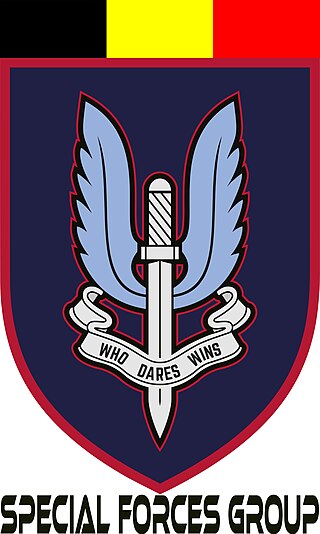
The Special Forces Group is the special forces unit in the Land Component of the Belgian Armed Forces.

The Special Forces Qualification Course (SFQC) or, informally, the Q Course is the initial formal training program for entry into the United States Army Special Forces. Phase I of the Q Course is Special Forces Assessment and Selection (SFAS). A candidate who is selected at the conclusion of SFAS will enable a candidate to continue to the next of the four phases. If a candidate successfully completes all phases they will graduate as a Special Forces qualified soldier and then, generally, be assigned to a 12-men Operational Detachment "A" (ODA), commonly known as an "A team." The length of the Q Course changes depending on the applicant's primary job field within Special Forces and their assigned foreign language capability but will usually last between 56 and 95 weeks.
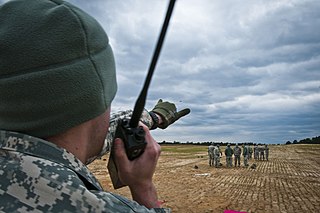
The United States Army Pathfinder Course trains military personnel in the U.S. Army and its sister services to set up parachute drop zones and helicopter landing zones for airborne and air assault missions.

The 560th Battlefield Surveillance Brigade, based at the Cumming Regional Readiness Center in Cumming, Georgia, was a major command of the Georgia Army National Guard. It was organized as the first battlefield surveillance brigade in the Army National Guard.
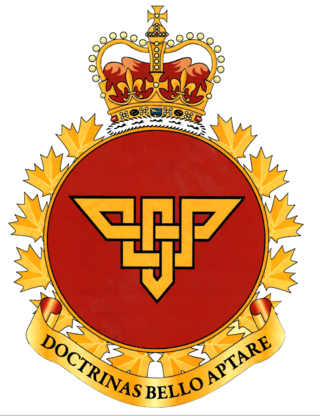
The Canadian Manoeuvre Training Centre (CMTC) is the Canadian Army's functional centre of excellence (FCoE) for collective training (CT) and is the army CT training authority on behalf of its higher headquarters, the Canadian Army Doctrine and Training Centre (CADTC). It is housed by 3rd Canadian Division Support Base Detachment Wainwright, in Denwood, Alberta.
Royal Marines recruit training is the longest basic modern infantry training programme of any Commonwealth, or North Atlantic Treaty Organization (NATO) combat troops. The Royal Marines are the only part of the British Armed Forces where officers and other ranks are trained at the same location, the Commando Training Centre Royal Marines (CTCRM) at Lympstone, Devon. Much of the basic training is carried out on the rugged terrain of Dartmoor and Woodbury Common with a significant proportion taking place at night.

1 Parachute Battalion is the only full-time paratroop unit of the South African Army. It was founded on 1 April 1961, along with the Parachute Battalion. The name of this unit was changed to Parachute Training Centre after 1998. It was the first battalion within 44 Parachute Brigade until 1999 when the brigade was downsized to 44 Parachute Regiment
Mission Command Training Program, based at Fort Leavenworth, Kansas, is the U.S. Army's only worldwide deployable Combat Training Center. MCTP provides full spectrum operations training support for senior commanders and their staffs so they can be successful in any mission in any operational environment. Its Senior Mentors counsel and offer their experience to Army senior commanders, subordinate commanders and staff. Additionally, MCTP's professional observer-trainers assist units with objective feedback and suggestions for improvement.
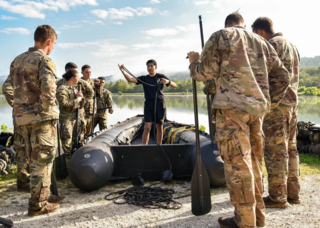
The Sapper Leader Course is a 28-day United States Army small unit tactics and leadership course that develops soldiers in critical skills and teaches advanced combat engineer techniques needed across the Army. Sapper training began development in 1982, and continued until 1985. The course is broken down into two, two-week phases, General Subjects, and Patrolling. The Sapper Leader course is often seen as the engineer equivalent to the US Army Ranger School, a school traditionally associated with and attended primarily by light infantry soldiers.

The Army Reserve Officer Training Corps (AROTC) is the United States Army component of the Reserve Officers' Training Corps. It is the largest Reserve Officer Training Corps (ROTC) program which is a group of college and university-based officer training programs for training commissioned officers for the United States Army and its reserves components: the Army Reserves and the Army National Guard. There are over 30,000 Army ROTC cadets enrolled in 274 ROTC programs at major universities throughout the United States. These schools are categorized as Military Colleges (MC), Military Junior Colleges (MJC) and Civilian Colleges (CC).

















